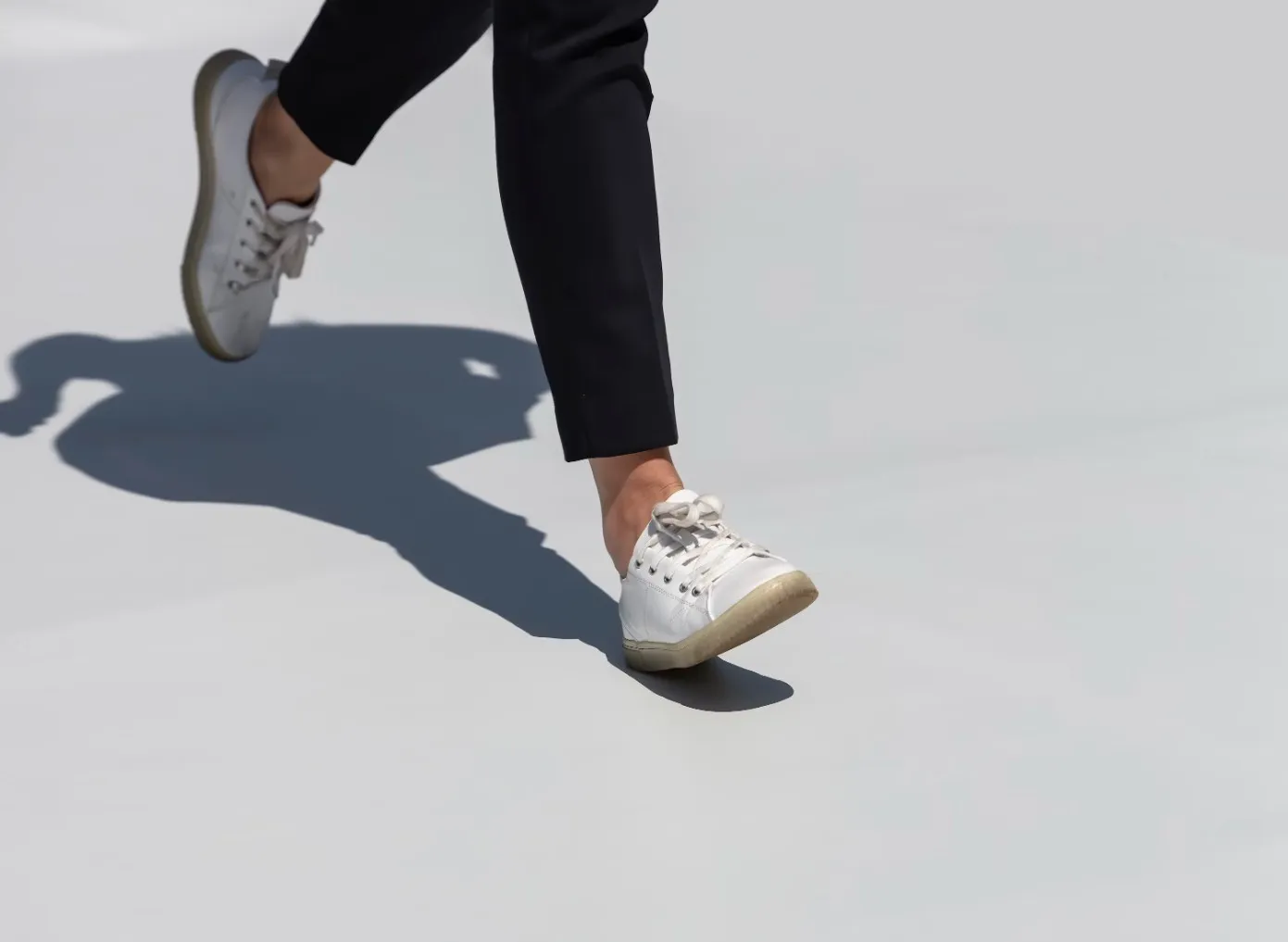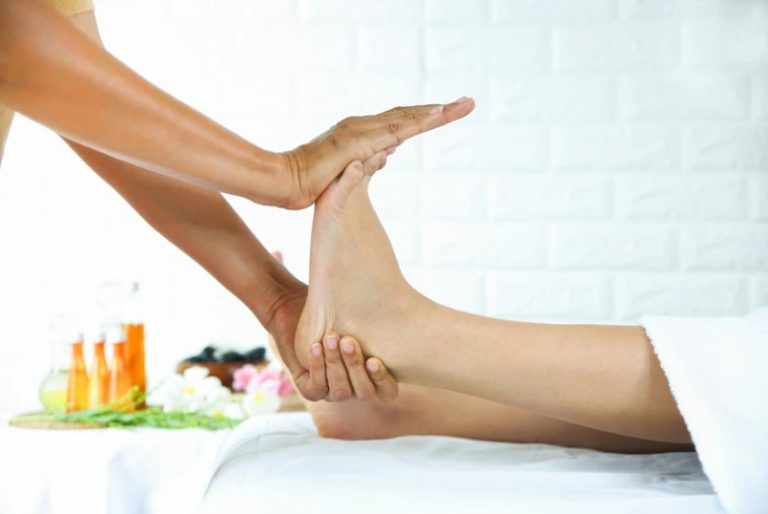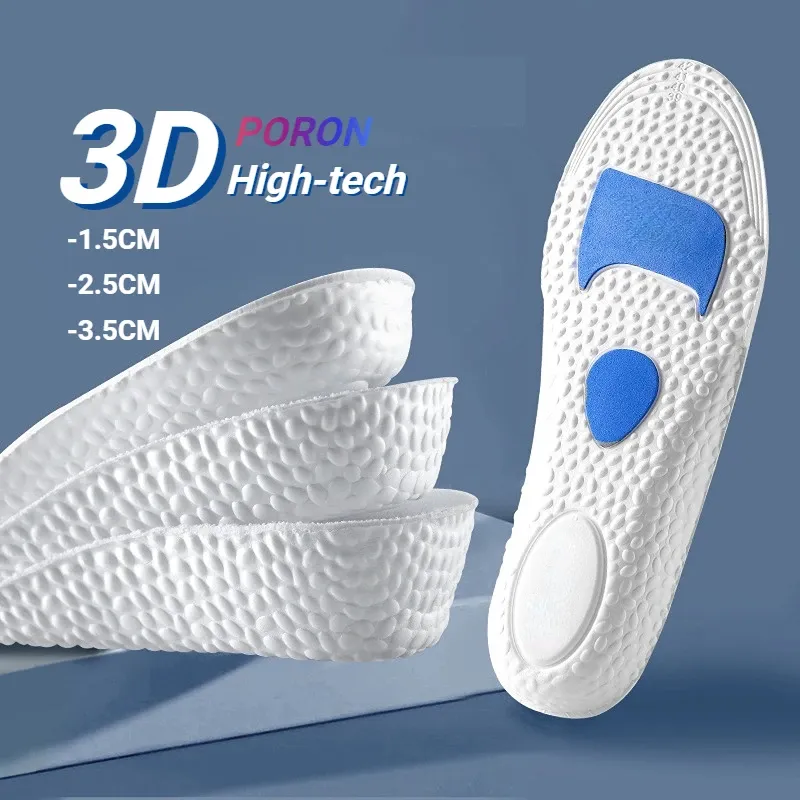Guide to the Best Insoles for Achilles Tendonitis – Top 10 Reviews
Foot pain can be a stubborn obstacle. It keeps you from fully enjoying your daily activities. Achilles tendonitis, in particular, has left countless individuals hobbling in its aftermath. But what if the solution to overcoming the discomfort were as simple as finding the right insole? That’s exactly why we’re here: to help you find the best insoles for Achilles tendonitis. With them, you can walk through life without pain.
This blog reviews the top 10 insoles. They can help alleviate Achilles tendonitis pain. They allow you to regain your movement, comfort, and quality of life.
Understanding Achilles Tendonitis: Causes, Symptoms, and Pain Points
Pain in the foot is a universal language, understood and dreaded by all. Especially when it originates from the Achilles tendon. Dealing with Achilles tendonitis can turn every footfall into a daunting task. But what exactly is Achilles tendonitis, and how does it affect our day-to-day lives? Let’s delve into this common condition. We’ll explore its causes, symptoms, and specific foot pain points.
What is Achilles Tendonitis?
Achilles tendonitis is an overuse injury of the Achilles tendon. The tendon is the band of tissue that connects calf muscles at the back of the lower leg to your heel bone. When you put too much stress on the tendon too quickly, inflammation and pain ensue, restricting movement. This is Achilles tendonitis.
Causes of Achilles Tendonitis
Achilles tendonitis often results from overuse or repetitive strain. Jumping, running, and sudden increases in physical activity without proper acclimatization often lead to this condition. Flat feet, tight calf muscles, or high arches are physiological factors that contribute to the development of Achilles tendonitis.
Symptoms Associated with Achilles Tendonitis
Among the earliest signs of Achilles tendonitis are pain and stiffness along the Achilles tendon or at the back of the heel. The pain intensifies after prolonged physical activity or in the morning. As the condition progresses, redness, swelling, or a thickened Achilles tendon might also become noticeable.
Specific Pain Points of Achilles Tendonitis
Achilles tendonitis doesn’t just cause sporadic pain but rather centers it around specific foot areas:
1.Back of Heel: The Achilles tendon connects the calf muscles to the back of the heel. It causes pain primarily in this area. It may range from a sharp, severe ache to a persistent dull pain.

2.Achilles Tendon Area: The Achilles Tendon Area is located between the heel and the calf. It is dominated by the Achilles tendon. This area often swells and becomes tender to touch.

3.Upper part of the Heel: The upper part of the heel can feel stiff and ache when the ankle moves while walking or running.
Understanding these pain points helps guide treatments and preventative strategies. This brings us closer to remedy and relief.
How Insoles Can Assist in Relieving Achilles Tendonitis Pain.
Insoles are designed to provide support to the foot, and by extension, the Achilles tendon. People with Achilles tendonitis often find relief through additional support or cushioning. This effectively reduces the stress on the already inflamed tendon.
Here are some ways insoles can help alleviate Achilles tendonitis pain:
Redistribution of Pressure: Insoles can distribute the pressure placed on the foot evenly, relieving the stress on the Achilles tendon.
Shock Absorption: Cushioning in insoles can lessen the impact of our steps, reducing the stress placed on the Achilles tendon.
Correct Foot Alignment: Properly fitting insoles can ensure that the foot maintains an optimal alignment. This alignment eases the strain on the Achilles tendon, helping prevent further inflammation and pain.
Reduced Overpronation: Overpronation often puts undue pressure on the Achilles tendon. Insoles with arch support can prevent overpronation and, in turn, reduce the likelihood of Achilles tendonitis pain.
How to Choose the Best Insoles
No two feet are the same. A one-size-fits-all approach won’t alleviate the pain of Achilles tendonitis. When choosing insoles, consider the differences in feet. There are notable factors to consider to ensure you are making an informed decision. Essentially, they will help you make the right choice for your feet.
Essential Features or Qualities of Best Insoles
Choosing the right insoles involves a careful analysis of various vital features, including:
Arch Type Compatibility: Your arch type significantly impacts your comfort and the effectiveness of an insole. It’s crucial to choose a product that supports your specific arch type, whether low, neutral, or high.
Material: Consider the material the insoles are made of. Materials such as foam and gel provide excellent cushioning for shock absorption. Cork or leather offer firm support. Breathable materials with moisture management properties can help keep your feet dry and comfortable.
Fit: An ideal insole should fit snugly inside your footwear without crowding the shoe or moving around. Pick an insole that matches your shoe size. This will ensure the best performance.
Heel Depth: A deeper heel cup can provide added stability, keeping your foot aligned as it should be. This feature is particularly important for those experiencing Achilles tendonitis. It affects foot alignment and relieves undue stress on the tendon.
Durability: The best insoles should withstand regular wear and tear. This ensures they continue providing optimal support and comfort. You don’t want an insole that flattens out or loses its shape after a few days of use.
Adaptability: Some insoles offer adaptive arch technology. They adapt to your foot’s shape and movement for a personalised fit. Such insoles can significantly improve comfort and effectiveness.
When navigated properly, the road to choosing the perfect insole needn’t be a long or winding one. By prioritizing these key features and appreciating their significance, you’re effectively on your way to selecting a pair of insoles. They could bring relief, stability, and, ultimately, freedom from the limitations of Achilles tendonitis. Your feet bear the weight of your world. Taking the time to find the best insoles they deserve is a sound and thoughtful investment.
Top 10 Best Insoles for Achilles Tendonitis
If you are battling Achilles tendonitis discomfort, step up your pain management strategy with our guide. We list the 10 best insoles designed to alleviate your discomfort.
ComfortMax: Flat Feet Insoles for Long-Lasting Pain Relief
ComfortMax insoles are professionally-designed orthotics. These insoles have a deep heel cup that offers maximal support. The dense foam provides prolonged comfort and arch support helps correct foot alignment. ComfortMax insoles encompass a semi-rigid arch support. They also have a deep heel cradle for pain reduction and stability.
Life is too short for discomfort, and with ComfortMax, who says you need to endure it? Strap in and stride on. ComfortMax insoles transform your shoes into paradises for your feet!
Key Features: Dense Foam; Arch Support; Heel Cup; Durable
Benefits: Corrects Foot Alignment; Reduces Pain
Pros: Excellent Support; Durable; Corrects Foot Alignment
Cons: Takes Time to Break-In
Dr. Scholl’s Pain Relief Orthotics for Plantar Fasciitis
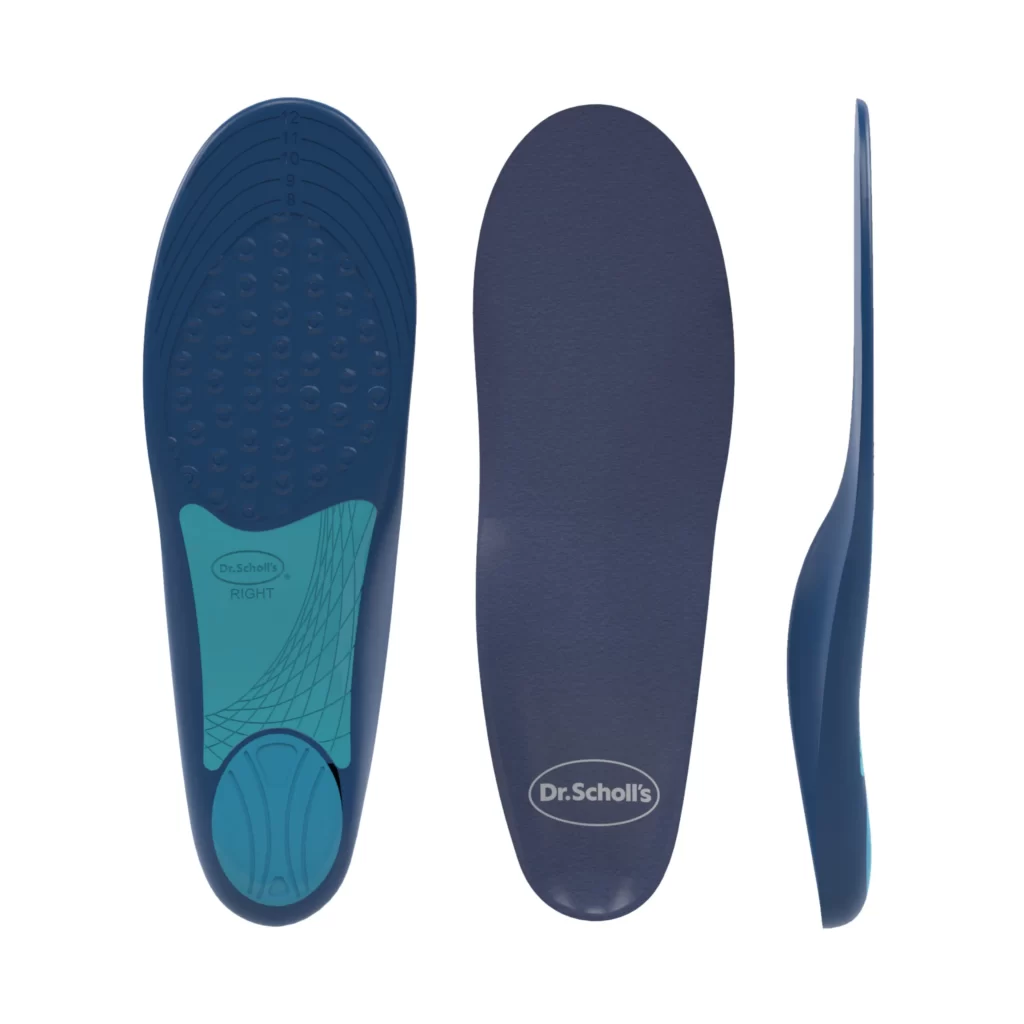
Dr. Scholl’s insoles are designed for Plantar Fasciitis. They can also deliver relief for Achilles tendonitis. Stellar shock absorption, but inadequate arch support for higher arches.
Key Features: Highly Shock-absorbent; Designed for Plantar Fasciitis
Benefits: Promotes pain reduction; Improves foot comfort
Pros: Excellent Shock Absorption; Multi-functional
Cons: Insufficient Arch Support for High Arches
Samurai Insoles

Samurai insoles flexibly adapt to your foot offering arch support. Its low profile fits most shoes, but might not offer enough support for extremely high arches.
Key Features: Flexible Design; Arch Support; Low Profile
Benefits: Reduces Overpronation; Better Foot Alignment
Pros: Easy-to-fit Design; Reduces Overpronation; Flexible Structure
Cons: May Not Suit High Arches
Spenco Polysorb Cross Trainer Insoles

Crafted with SpenCore material, these aim at shock absorption and cushioning. The forefoot EVA cushioning enhances gait, while the arch might not be high enough for some.
Key Features: SpenCore Material; EVA Forefoot Cushioning; Arch Support
Benefits: Better Gait; Efficient Shock Absorption
Pros: Excellent Cushioning; Promotes a Healthy Gait; Durable
Cons: Arch May Not be High Enough for Some
SOLE Active Medium Shoe Insoles

An eco-friendly option with excellent pressure redistribution. Although customizable, they might feel too firm for some.
Key Features: Made of Recycled Materials; Customizable Fit; Pressure Redistribution Design
Benefits: Customizable Support; Eco-Friendly
Pros: Environment-friendly; Customizable Fit; Even Pressure Distribution
Cons: May Feel Too Firm for Some
Vionic Full-Length Active Orthotic
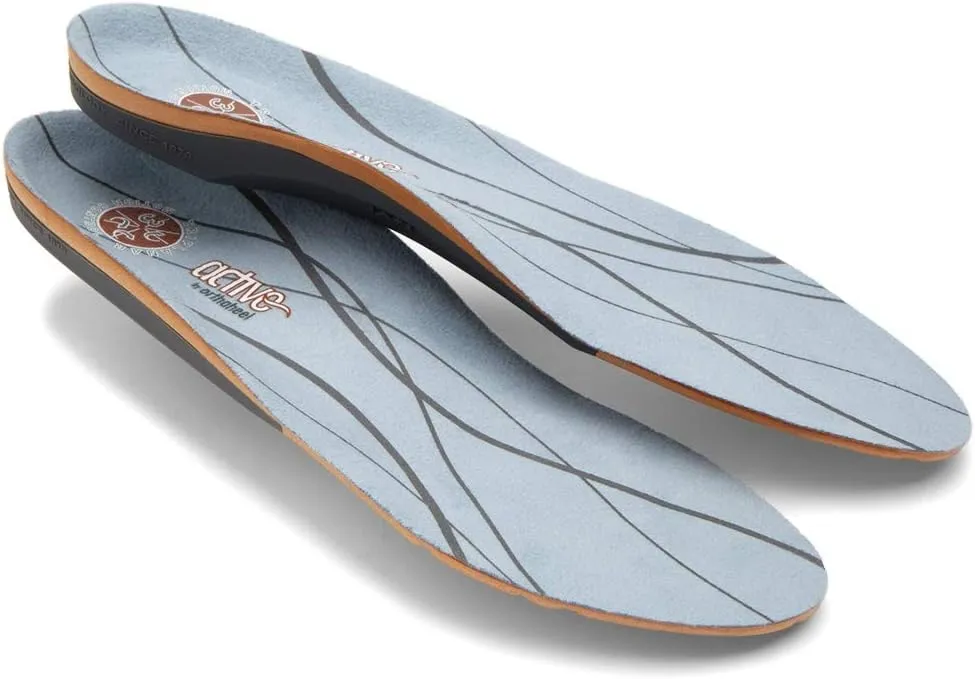
Vionic insoles reduce overpronation through Tri-Planar Motion Control technology. The product offers a balance of flexibility and rigidity. They might feel hard initially.
Key Features: Tri-Planar Motion Control technology; Flexible and Rigid Design
Benefits: Reduces Overpronation; Long-Lasting Comfort
Pros: Reduces Overpronation; Good Balance of Flexibility and Rigidity
Cons: May Feel Hard Initially
Walk-Hero Comfort and Support Plantar Fasciitis Feet Insoles
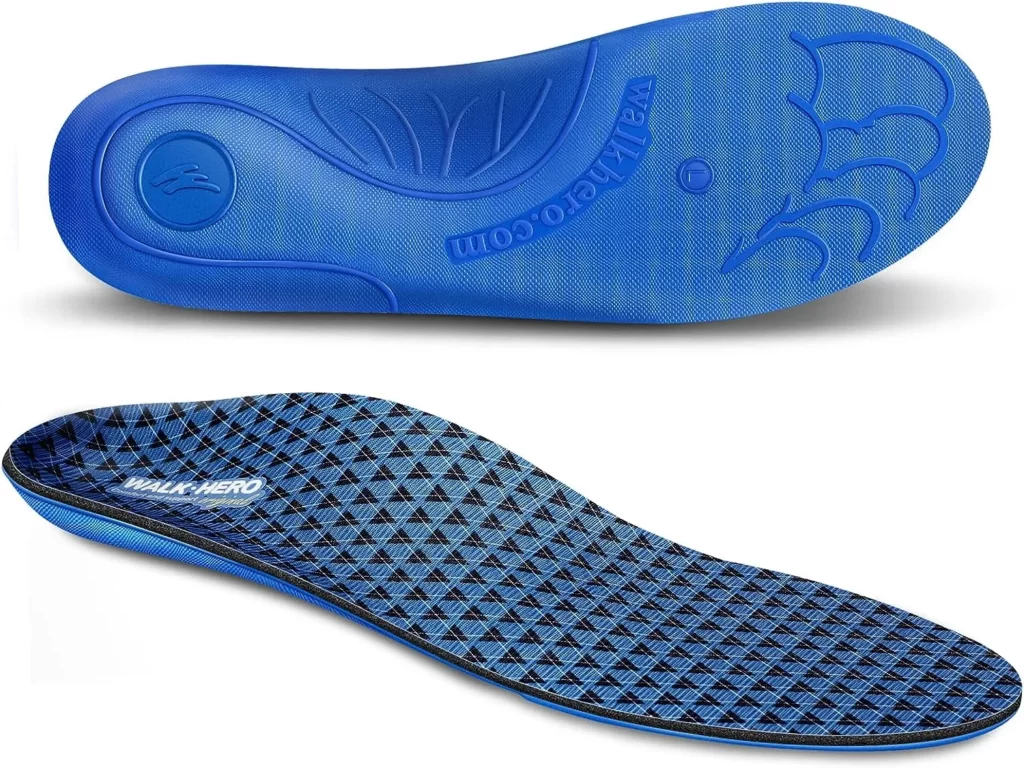
Walk-Hero insoles offer excellent foot alignment. They use anti-pronation biomechanical reinforcement technology and a deep heel cup. They also provide arch support and shock absorption. However, the cushioning might be insufficient for some.
Key Features: Reinforcement Technology; Deep Heel Cup; Arch Support
Benefits: Excellent Foot Alignment; Shock Absorption
Pros: Improved Foot Alignment; Excellent Arch Support; Efficient Shock Absorption
Cons: Cushioning Might be Inadequate for Some
Tread Labs – Stride Insole

Tread Labs insoles bring durability and cost-effectiveness. They use a unique two-part system and a replaceable top cover. They might feel slightly hard compared to others.
Key Features: Two-part System Insole; Replaceable Top Cover
Benefits: Economical; Increased Durability
Pros: Cost-Effective Replacement System; Durable
Cons: May Feel a Bit Stiff
Sof Sole Insoles

Sof Sole insoles offer a COOLMAX fabric top for moisture management. They have a balance of cushioning and support. However, they might require a break-in period.
Key Features: Balanced Cushioning; Arch Support; COOLMAX Fabric
Benefits: Maintains dryness; Provides support and comfort
Pros: Excellent Moisture Management; Cushion and Support Balance
Cons: Requires a Break-in Period
Nazaroo Shoe Insoles for Flat Feet
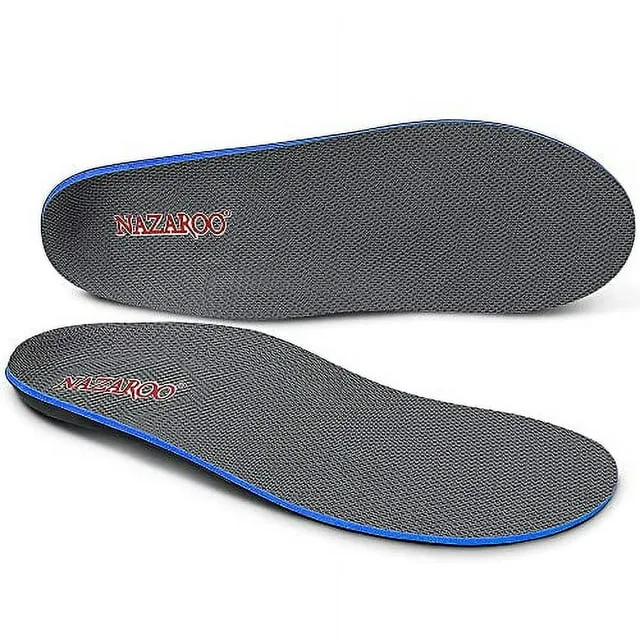
Nazaroo reasonably priced insoles offer excellent arch support and shock absorption. However, the sizing might be off for some users.
Key Features: Affordable; High Arch Support; Efficient Shock Absorption
Benefits: Economical; Reduced Pain; Enhanced Comfort
Pros: Economical; Excellent Arch Support; Good Shock Absorption
Cons: Potential Sizing Issues
A Buyer’s Guide: Choosing the Right Insoles for Your Needs
Choosing the perfect insoles to support your needs isn’t just about picking up the first pair you spot on the shelf. It’s not random. It’s a calculated process. The process considers factors such as foot size, arch type, and individual comfort. ‘How do I go about this?’ you might ask. Here’s a practical step-by-step guide to help you analyze your needs and make an informed purchase:
Step 1: Understand Your Foot Type
Before embarking on your insole-searching journey, knowing your foot type is essential. This knowledge can dictate the kind of support your feet require. A podiatrist can provide an accurate evaluation. Alternatively, the “wet test” at home could also give some insights. The key lies in your arch type:
Flat Foot: If you’ve got a full footprint with almost no inward curve, you have flat feet, often accompanied by overpronation. You may need firm insoles with high arch support.
Neutral Arch: If there’s a distinct curve along the inside of your foot with a band slightly over half the width of your foot connecting the heel and toe, you have a neutral arch. Insoles with moderate arch support would often be the best fit.
High Arch: If you see just your heel, the top of your foot, and a thin line along the outside of your foot, you have high arches, commonly related to underpronation or supination. Insoles providing extra cushioning could provide immense relief.
Step 2: Determine Your Foot Size and Shoe Type
Place your foot on a piece of paper. Trace around it. Then, measure the length and width to determine your foot size. Additionally, ensure to account for the type of shoes you frequently wear. For casual or athletic shoes, full-sized insoles might be a perfect fit. However, for dress shoes, you may require 3/4-length insoles.
Step 3: Identify Your Primary Need
Your specific reasons for needing insoles can guide your choice. Is it to alleviate the discomfort from an existing foot condition? For example, conditions like Achilles tendonitis, plantar fasciitis, or bunions? Or are you simply seeking enhanced comfort or shock absorption? Recognizing the primary need will inform your selection.
Step 4: Select the Right Material
Insole materials greatly affect their comfort and function. Memory foam provides good cushioning and pressure relief. Gel insoles serve well for shock absorption. Cork or leather offers firm, structured support.
Step 5: Test for Comfort Level
Once you’ve made your selection, ensure to test the insoles in your shoes. Walk or run around to get a feel of them. They should fit well without crowding your shoes. They should also offer comfort, support, and relief as expected.
Step 6: Budget and Quality
Price is a necessary consideration too. However, never compromise on quality for cost. More durable, high-quality insoles may have a higher upfront price but save you more in the long run.
Once you’ve purchased your insoles, remember to allow a break-in period. Gradually increase the usage as your feet adapt.
Final Thought
We had an enlightening exploration into insoles. We realized how something seemingly small can significantly manage Achilles tendonitis pain. Are you a committed runner, an active walker, or someone seeking relief from everyday discomfort? Investing in the right insoles could change how you manage pain.
These top 10 picks are explicitly designed for different arch types, foot sizes, and individual comfort levels. They bring to the table a wide array of choices. Each one held the potential to cater to distinct needs and preferences. They aimed to profoundly impact the buyer’s life.
Remember, each step in pain management is guided by a well-chosen insole. It’s a stride towards a better, healthier you. It’s never too late or too early to invest in your well-being. After all, every great journey begins with a single, comfortable, supported step!

